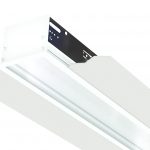Will Amazon Replace Distributors From The Chain?

In the beginning, Amazon only sold books.
After a quarter-century of business, the company has 647,500 employees, occupies 288.4 million square feet of real estate and accounts for nearly half of online retail in the United States.
In 2005, the online giant set its sights on the B2B market.
Today, Amazon Business, the company’s B2B sales division, boasts “a “marketplace designed to bring suppliers to customers and customers to suppliers,” with third-party sellers making up more than 50% of its $10 billion in annualized sales.
Amazon looms large
The e-commerce behemoth operates in sectors ranging from janitorial services to defense contracting, and now has its tentacles wrapped around electrical wholesale distribution, cutting off oxygen in the supply chain that caters to distributors and design-build construction firms.
Distributors are aware of the potential consequences, with 33% calling Amazon Business the greatest threat to their business, according to Unilog.
Design-build takes hold
Design-build is anticipated to account for 44% of construction spending in various segments, including manufacturing and commercial, between 2018-2021, according to Design-Build Institute of America. Design-build delivery was rated highest across all construction delivery methods, with 76% reporting very good and excellent experiences, according to a recent FMI Design-Build Market research report. Innovation and fast-track capabilities were listed as the top associated benefits.
The design-build model depends on local and trusted distributor and contractor relationships, as well as partnerships with manufacturers that can rapidly respond to questions from their distributors and contractors.
As this trend takes hold, “best-in-class” suppliers have emerged. They provide access to cutting-edge products and deliver planning support to stay ahead of the competition. They also offer portfolios of spec-grade products engineered to reduce overall installation costs, as well as cost-effective products that can quickly ship to job sites to advance new construction or retrofit projects.
What contractor customers want
As the electrical industry labor shortage continues, contractors are seeking ways to reduce project time and job site work. While Amazon Business gives them the opportunity to electronically procure miscellaneous products quickly, contractors and other B2B buyers often need specific products, private brands, products that require significant technical expertise, training and consultative selling.
Contractors also place orders that are difficult to deliver via common carrier that require shipment on large, flatbed trucks with specialized delivery mechanisms. Amazon Business can fulfill orders rapidly, but it can only do so for products that can be shipped with common carriers.
Amazon Business’ eProcurement program collects data to help Amazon determine what products it can ship by common carrier to complement distributors’ flatbed truck deliveries. And it’s only a matter of time before Amazon figures out means to deliver bulky items. It has been testing a new service that matches truck drivers with shippers since 2018.
Despite Amazon Business’ growing value proposition, 52% of distributors are not currently prepared with a strategy to compete with it, according to Unilog.
The new sales counter
Distributors are also trying to hang on to market share in an era of digital disruption. Eight out of 10 Americans now shop online. Contractor customers are embracing the use of more digital tools on the job. And as millennials become a predominant part of the workforce, the use of the internet to purchase products will increase.
As far as Amazon’s concerned, the mobile phone is the new sales counter. The company’s Part Finder functionality for its mobile app can identify parts via a mobile phone camera and direct customers straight to the Amazon website page where they are for sale. And, a recent job posting on Amazon’s website, states, “We are building a digital product expert that is always available, with super-human knowledge of every product ever made.”
As Amazon attacks traditional distribution and the design-build trend ramps up, distributors need to develop alliances within the supply chain and new value propositions that combine online and offline capabilities to retain current customers and win new ones.
For strategies to compete and grow your market share, click “How Distributors Survive, Win Over Contractors.”

